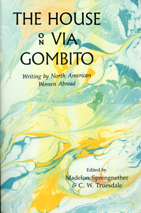Three thousand miles up, I’m sometimes at a loss for things to do. Recently, flying home from Italy via Amsterdam, I started reading the KLM packaging. Not only did the flight magazine tell me that Amsterdam’s Concertgewau orchestra hall is one of the finest in the world, along with Boston’s Symphony Hall, but that the beef served on board KLM planes comes from a cow first bred in the Middle Ages, the blaarkop. Not only do these feed on nothing but grass, herbs, and wildflowers, but some actually are stationed near Schiphol airport.
As we came down for a landing, I spied plots of corn and other crops, but no cows. Using every inch of land makes sense in a country mostly claimed from the sea. I also applaud the raising of beef cattle on essentially wild grasses and flowers. Yes it take longer than the horrible methods of feed lot concentration and fattening on corn in the US, but feeding cattle grass and making them more around to get it, is far better for the environment–no lagoons of sludge from cow feces and urine (in some cases so huge that they dwarf what some major cities) but also no fast-fattening on corn which bulks up cows but riddles their meat with fat. Seems to me I remember the highly enjoyable documentary “King Corn” mentioning that corn-fed beef is around 98% fat, versus 15% for grass fed. Why anyone with any sense would buy corn-fed beef is beyond me, but then I don’t much like beef anymore, and our family has the bucks to purchase grass-fed.
As a whole I’d say that the Europeans in Holland and Italy eat better food than do we in the US. And the KLM airplane paper cups tell us (in very fine print along the side) that they are made from 100% renewable resources, and the inside is coated with Inego innovation, made from plants not oil. Hurrah, say I, blinking to readjust my eye sight. Then my heart sank. Four months ago we purchased new bathroom carpeting (it’s a bath plus dressing room) made from corn. There I was strutting my environmental green, while the cats (heaven help us) were sniffing themselves into new places to pee! Slowly the lovely new carpeting began to smell suspiciously of a piss pot. Soon I was rendered frantic as I tried all sorts of products shy of sending the offending cat (we have three but were pretty sure the culprit was Tilly, the oldest and most aggrieved) to the rendering plant. After weeks of denial, hope, disgust, more hope and finally resignation, we visited the carpet/linoleum dealer yesterday and selected an oil-based linoleum replacement. There’s no telling how Tilly will react, but even if she continues to pee on the floor, not in the litter box, there will be hard, impermeable oil-based linoleum under her. Fingers crossed. As the lovely dame in the carpet store said, “They’re family.” Yup, she’s got that right. Pretty hard to put down a critter who’s survived tornadoes, flu, children leaving home, spousal disagreements, aging joints, dashed hopes, and loves you so intensely she walks over your sleeping body for comfort.
As I say, the Italians (and probably the Hollanders) eat better than we do in the US. Food for us is often something to be downed fast and furious. In Europe, it’s something to savor well into the evening. My favorite meal in Italy was the first night in Florence when my friend the artist Patricia Glee Smith (check out her website) and I went across narrow Borgo Pinto from our convent hotel to Accadi, a family-run small restaurant. That night huge mushrooms (porcini? morels?) were on the menu. I had pasta with them and Pat had rice. The smooth sauce, just piquant enough for the delicious earthy taste of the mushrooms, was divine. The pasta cooked to perfection, just enough, and the portion not too large or too small. As we ate, we were grinning ear to ear.
Then visiting in Bologna, I encountered a series of plates on the wall of our hostess. Turns out the plates are made by a Bolognese artist Angela Lorenz, or to use her professional name, “L’Aura,” the Wind. The images on each plate are of women in antique Renaissance head gear, puffed sleeves and swooping necklines, i.e. “Babes” from 450 years ago. Of course I don’t need to mention that women have been in charge of food preparation for millennia. These dames, slyly and in concert, suggest something different. Here, in order of the plates, reading left to right, is their message:
She is round.
She is idealized.
She hangs on the wall.
She is not to be used.
She is not disposable.
She is a dish.
By the end, I was laughing out loud, highly entertained at the simplicity and sly resistance of these plates.


Leave a Reply